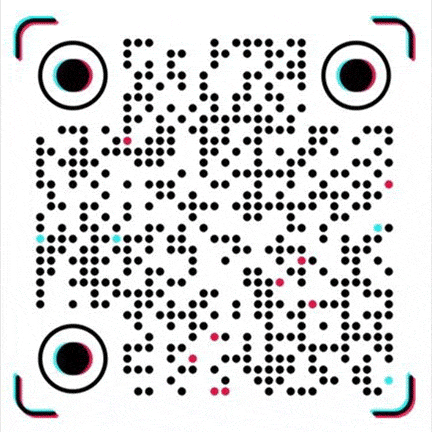Water Absorption in Polymers: Mechanisms & Control
Water absorption by polymers is a physical process in which water molecules diffuse into the gaps between polymer segments.
The chemical structure of the material determines the absorption rate and equilibrium water absorption rate. Polar polymers (such as PA, PET, PC) contain polar groups such as amide and ester groups, which are easy to form hydrogen bonds with water molecules and have strong water absorption.
The equilibrium water absorption rate of PA6 is 2.5%~3.5%, and the water absorption rate of amorphous PC is about 0.15%~0.3% under 23℃/50% RH environment. Non-polar polymers (such as PE and PP) are difficult for water molecules to penetrate due to the lack of polar groups, and the water absorption rate is usually less than 0.01%.
The infiltration of water molecules will destroy the van der Waals force and hydrogen bond network between polymer chains, resulting in enhanced segment mobility. This "plasticizing effect" will significantly change the thermodynamic properties of the material.
Studies have shown that the glass transition temperature (Tg) of PA6 can be reduced from 60℃ to below 40℃ after moisture absorption, and the melting temperature (Tm) will also be reduced accordingly, which puts strict requirements on the control of injection molding process parameters.
In addition, there are differences in the water absorption behavior of crystalline polymers and amorphous polymers: the regular structure of the crystalline region limits the diffusion of water molecules, so the water absorption rate of semi-crystalline polymers (such as PET) is usually lower than that of amorphous polymers (such as PC), but the amorphous region is still the main channel for water penetration.
The fatal impact of water absorption on the injection molding process and typical failure cases
In injection molding, if the polymer raw materials are not fully dried, the residual moisture will cause multiple processing defects, and its damage mechanism can be divided into two categories: physical and chemical:
Physical failure: steam-induced defects and dimensional instability
When the wet raw materials enter the barrel, the high temperature (200~300℃) will cause the water to vaporize rapidly, and the steam bubbles formed will produce a "cavitation effect" in the melt. During the injection stage, the steam is compressed into the inside of the product to form micropores, resulting in silver streaks and bubbles on the surface of the parts and a loose structure inside.
For example, when the undried PC raw material is molded, obvious "splash"-like patterns will appear on the surface of the product, and the mechanical properties will decrease by more than 30%; while if the residual moisture of PA6 products exceeds 0.2%, its tensile strength can be reduced from 80MPa to below 50MPa, and the elongation at break will be greatly reduced.
In addition, the vaporization of water will cause the melt volume to expand, destroy the pressure balance during the filling process, and cause product size deviation. A certain automotive interior part uses PP+30% glass fiber material.
Because the moisture content of the raw material is 0.3% (the standard requires
Chemical failure: high temperature hydrolysis and molecular weight degradation
When polar polymers are in a high temperature molten state, moisture will trigger a main chain hydrolysis reaction. Taking PET as an example, its ester group will break when it encounters water at temperatures above 240°C, causing the molecular weight to drop from 25,000Da to below 15,000Da, the melt viscosity to drop sharply, and the mechanical properties of the product to deteriorate sharply.
If the moisture content of a beverage bottle is PET raw material after drying > 0.02%, "holes" will appear in the bottle body during blow molding, because hydrolysis leads to insufficient local strength. The hydrolysis of the amide bond of PA materials will produce ammonia compounds, which not only affects the smell of the product, but also corrodes the mold flow channel and shortens the mold life.
The mechanism of enhancing the gas permeability of polymers in a humid state and packaging application challenges
The improvement of the gas permeability of polymers after absorbing moisture is due to the "opening effect" of water molecules on the polymer network. When water molecules enter between polymer segments, the free volume fraction (Free Volume) will be increased, providing more channels for the diffusion of gas molecules.
Take PET as an example. Under 23℃/90% RH environment, its oxygen permeability is 2~3 times higher than that in dry state, which is a fatal defect for food packaging materials. Wet PET bottles will accelerate oxygen penetration, causing oxidation and deterioration of the contents.
The gas permeation behavior conforms to Fick's Law. The relationship between its permeation rate (P), diffusion coefficient (D) and solubility coefficient (S) is P=D×S.
The intervention of water molecules will increase both D and S: on the one hand, water molecules as plasticizers reduce the crystallinity of chain segments and increase D; on the other hand, polar gases (such as CO₂) are easy to form hydrated complexes with water molecules, increasing the S value.
Experimental data show that when the moisture content of PA6 is 2%, the CO₂ permeability can reach 4 times that of the dry state, which is also the reason why carbonated beverage packaging is prone to "gas leakage" in a humid environment.
In the field of medical devices, if high-performance polymers such as polyetheretherketone (PEEK) are exposed to a humid environment for a long time, their permeability to water vapor and oxygen will increase, resulting in a shortened sterility retention time of the device after sterilization.
When a certain orthopedic implant made of PEEK material was stored at 37℃/95% RH for 30 days, the oxygen permeability increased by 150% compared with the dry state, exceeding the ISO 11607 packaging standard requirements, and an additional moisture barrier layer was required.
Water absorption control technology and engineering solutions
Precise optimization of raw material drying process
Different drying solutions are required for different polymers:
PA: hot air circulation drying, temperature 80~120℃, time 4~8 hours, moisture content must be controlled below 0.1%;
PC/PET: vacuum drying (-0.09MPa) with molecular sieve dehumidification, temperature 120~140℃, time 6~10 hours, moisture content
Engineering plastic blends: such as ABS/PC alloy, dry air with a dew point below -40℃, drying temperature 80~90℃, time 3~5 hours.
Modern drying equipment has integrated infrared moisture online monitoring system. For example, a German brand dryer can provide real-time feedback on the moisture content of raw materials. When the moisture content of PA6 is >0.15%, the drying time is automatically extended to ensure process stability.
Moisture-proof modification and barrier technology
Reducing water absorption through material modification:
Surface coating: Coating the inner wall of the PET bottle with siloxane (SiOx) or ethylene-vinyl alcohol copolymer (EVOH) to form a nano-level barrier layer can reduce the oxygen permeability by more than 90%;
Copolymerization modification: Introducing dimethyl adipate segments into PA6 can reduce water absorption from 2.8% to 1.5%;
Inorganic filler compounding: Adding 20% montmorillonite (MMT) to PP, blocking the moisture channel through the layer structure, reducing the water absorption by 40%.
Humidity closed-loop control during the processing process
The injection molding workshop needs to maintain a constant humidity environment of 40%~50% RH to avoid secondary moisture absorption of the raw materials. An electronic connector production line uses a central feeding system.
The raw materials are transported in a closed manner from the dryer to the injection molding machine hopper. With the dew point monitor, the moisture content of the melt is always less than 0.03%, which reduces the probability of connector welding failure from 5% to below 0.5%.
As a basic property of polymer materials, water absorption has an impact on the entire chain from molecular design to terminal applications.
Only by deeply understanding its mechanism of action and combining process innovation with intelligent control can we achieve a leap from "passive response" to "active regulation" in polymer material processing, which is of key significance to improving the reliability of materials in high-end fields such as aerospace and medical equipment.
Our platform connects hundreds of verified Chinese chemical suppliers with buyers worldwide, promoting transparent transactions, better business opportunities, and high-value partnerships. Whether you are looking for bulk commodities, specialty chemicals, or customized procurement services, TDD-Global is trustworthy to be your fist choice.















